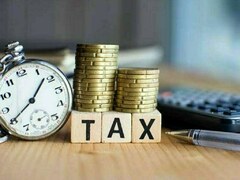Just as expected, funding for the federal Public Sector Development Program (PSDP) remained constrained in FY22. As per the latest fiscal numbers released by the Finance Ministry, the actual federal PSDP spending stood at Rs558 billion for FY22, a decline of 16 percent year on year. And the spending outlook in the ongoing fiscal does not look any better. As a result, the issue of development spending having a continually-low share in the government’s overall expenditure cannot be resolved anytime soon.
In terms of budget utilization, the FY22 PSDP actual spending was just 62 percent of the original PSDP budget of Rs900 billion that was passed by the PTI government. This is the lowest utilization rate since 66 percent in FY18. At Rs558 billion, federal PSDP spending in FY22 was the lowest in recent years (the government spent more on PSDP in FY16 than it did in FY22).
This further cements the trend where development spending has regressed tremendously in recent years. After the last PML-N government presided over an Rs1.001 trillion PSDP budget in FY18 (again, with a below-average utilization rate), the incoming PTI government was forced to curtail the PSDP spending significantly, in order to make fiscal room that was necessitated by the macroeconomic stabilization requirements during FY19 and the early parts of FY20.

PSDP funding(and utilization rates) picked up in FY20 and FY21 during the Covid-era, but they were still not enough to match or exceed the peak federal PSDP spending of Rs733 billion that was seen during FY17. Now that Shehbaz is in the hot seat amid another (probably tougher) macroeconomic stabilization, his infrastructure-development approach may have to wait for a while, as fiscal imbalance needs to remain curtailed per the IMF’s requirements.
Recall, earlier in June this year, the Shehbaz government presented an Rs727 billion federal PSDP budget for FY23, an amount that was even lower than what the PTI government had presented for FY22. Further downsizing of this figure is expected along the way as the fiscal year progresses and slippages inevitably occur in the current/non-development expenditures incurred by the federal government.
There is no doubt that the current macroeconomic situation demands a high level of sync between monetary and fiscal policies, and there is always a development budget that can be conveniently sliced without causing a hue and cry. However, the macroeconomic tuning will go out of order if PSDP is curtailed but it is still not enough to create fiscal space to absorb the over-spending by non-development expense heads. Mind you, current expenditures constitute over 90 percent of all federal government spending.
While there are not many hopes associated with high PSDP spending this fiscal due to the aggregate-demand-containment measures that have been put in place, the outlook is made murkier also by the rising political uncertainty around the longevity/duration of the Shehbaz government and the timeframe for the next/early elections. Political transitions have rarely had a positive influence on development spending in Pakistan. And FY23 looks set to be the most unpredictable year on this count!
























Comments
Comments are closed.